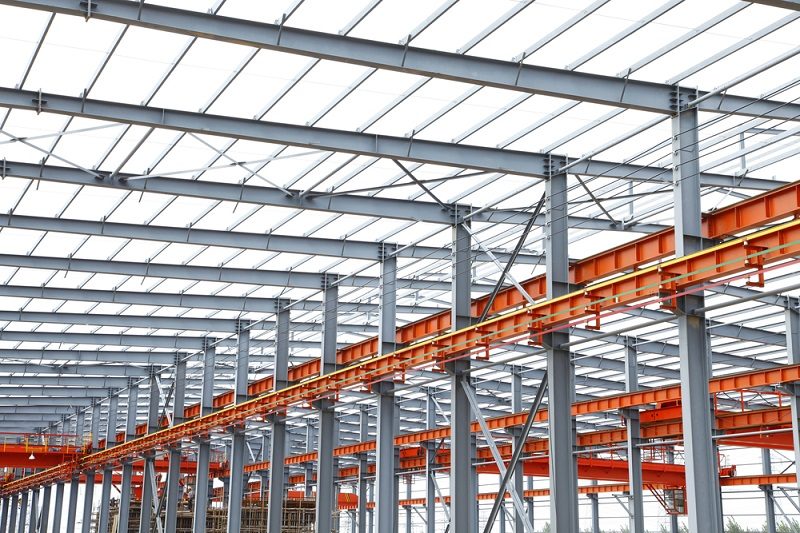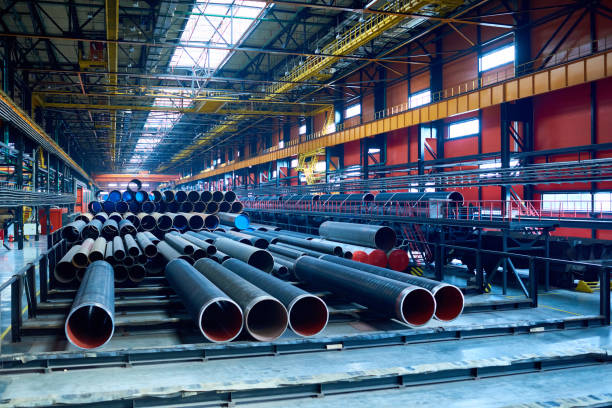Cutting-edge Fads in Steel Manufacture: Enhancing Toughness and Accuracy
In the realm of steel construction, the quest of durability and precision has actually led to a wave of innovative fads that are improving the market. These fads are not simply forming the existing however additionally laying the foundation for the future of steel construction, assuring more enhancements in resilience and accuracy.
Advanced Welding Technologies
In the world of steel manufacture, the fostering of advanced welding innovations has actually significantly reinvented the industry's strategy to accomplishing premium quality and accuracy in structural welds. Advanced welding innovations, such as laser light beam welding and rubbing stir welding, have actually become game-changers in the area. Laser beam welding uses a focused laser beam of light to join steel components with remarkable accuracy and speed, making it suitable for slim materials and intricate designs. On the various other hand, friction stir welding produces incredibly solid bonds by mechanically intermixing the particles of the products at the joint, removing the requirement for melting the metal. These technologies offer many advantages, including decreased heat-affected zones, marginal distortion, and improved mechanical properties in the bonded joints. By leveraging these advanced welding strategies, steel makers can boost the sturdiness, strength, and precision of their structural welds, fulfilling the increasingly requiring requirements of modern building and construction tasks.
Robotic Automation in Manufacture
Accepting robotic automation has actually become a keystone of modern steel construction practices, streamlining processes and enhancing performance throughout the industry. Robotics are revolutionizing the method steel components are manufactured, offering unparalleled accuracy and speed while lowering human mistake. These automated systems can deal with repeated jobs with regular precision, resulting in better final product.
One trick benefit of robotic automation in steel manufacture is the capacity to function all the time without exhaustion, significantly enhancing manufacturing output. This continuous operation lessens downtime and increases project timelines, ultimately saving costs for manufacturers. In addition, robotics can be set to perform intricate tasks that might be unsafe or tough for human employees, boosting safety in the work environment.
Additionally, robot automation makes it possible for smooth combination with various other electronic technologies, such as computer-aided layout (CAD) software program and Internet of Things (IoT) systems (steel fabrication melbourne). This interconnected technique enhances interaction between various phases of fabrication, optimizing operations and making certain real-time monitoring and control. As the steel manufacture sector remains to advance, robotic automation attracts attention as a transformative force driving efficiency and precision in producing processes

High-Strength Alloy Advancement
The development of high-strength alloy development in steel construction is reshaping the sector's approach to enhancing product toughness and performance. High-strength alloys are crafted to display superior mechanical properties, such as increased tensile stamina, sturdiness, and deterioration resistance compared to conventional steel grades. By including these sophisticated alloys into fabrication processes, manufacturers can generate elements that withstand higher stress and anxiety degrees and harsh atmospheres, causing even more durable and reputable end items.
One key benefit of high-strength alloy growth is the capability to lower material thickness without compromising architectural stability. This not only causes lighter-weight parts but also contributes to cost financial savings and improved effectiveness in fabrication and setting up processes. The boosted strength-to-weight proportion of these alloys allows for the layout and building of structures with higher load-bearing capabilities while lessening total weight.
3D Modeling and Simulation Software Application
Innovations in steel fabrication processes have actually been considerably moved by the integration of advanced 3D modeling and simulation software program tools. These devices permit makers to produce detailed virtual designs of find out this here their tasks, enabling them to visualize the final item with precision before any physical job starts. By simulating numerous anxiety elements, environmental conditions, and structural loads, makers can optimize layouts for improved durability and performance. Additionally, 3D modeling and simulation software application improve the production procedure by recognizing possible issues early on, minimizing the requirement for expensive rework and reducing material waste.

Lasting Practices in Steel Production
Including lasting methods into steel manufacturing procedures is crucial for decreasing ecological effect and making sure long-term resource availability. One vital lasting method is the adoption of energy-efficient technologies to decrease greenhouse gas discharges throughout the steel production process. This consists of making use of renewable resource sources, such as solar or wind power, to power steel plants and carrying out energy-efficient tools to enhance power usage.
One more important element of sustainable steel manufacturing is the liable sourcing of raw products. This entails ensuring that the iron ore and various other sources used in steelmaking are gotten from honest and eco pleasant resources. By advertising transparency in the supply chain and sticking to stringent ecological standards, steel manufacturers can minimize the unfavorable effects of source extraction on regional ecosystems and communities.

Final Thought
Finally, the innovative trends in steel fabrication such as sophisticated welding technologies, robotic automation, high-strength alloy advancement, 3D modeling and simulation software application, and lasting practices are boosting the resilience and accuracy of steel items. These advancements are changing the steel fabrication industry by enhancing top quality, effectiveness, and sustainability. It is clear that the future of steel construction exists in embracing these cutting-edge technologies to fulfill the needs of contemporary construction and production markets.
In the realm of steel construction, the pursuit of longevity and precision has led to a wave of ingenious fads that are reshaping the sector.In the world of steel fabrication, the fostering of sophisticated welding innovations has actually dramatically transformed the market's approach to achieving exceptional quality and accuracy in architectural welds. As the steel fabrication sector continues to evolve, robotic automation stands out as a transformative force driving performance and precision in making procedures.
Additionally, reusing and recycling steel scrap and waste products play a substantial function in enhancing the sustainability of steel production. steel fixing.In verdict, the cutting-edge fads in steel fabrication such as sophisticated welding innovations, robot automation, high-strength alloy development, 3D modeling and simulation software, and lasting techniques are enhancing the longevity and accuracy of steel items